The Belgian Malinois is a highly intelligent, diligent, and loyal breed. Ideally, this dog is suited to working lifestyles, such as farm work, police work, and even the special forces. That is exactly why we have created this great list of information, characteristics, and facts all about the Belgian Malinois. A large breed, they are built for athleticism. Their sleek, streamlined bodies adapt well to the rigor of intensive training. Given a firm hand, lots of training, and plenty of exercise, a Belgian Malinois can be quite the companion.
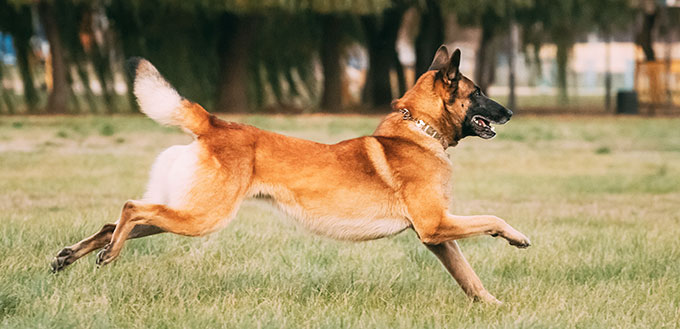
Breed Overview
| Dog Breed Group | Height | Weight | Life Expectancy | Energy Levels |
|---|---|---|---|---|
| Herding Dog | 22 - 26 inches | 40 - 75 pounds | 14-16 years | High |
History of the Belgian Malinois
The Belgian Malinois is a herding breed of dog native to Belgium. It is amongst one amongst four Belgian Shepherd dogs, alongside the Groenendael, the Belgian Laekenois, and the Belgian Tervuren. It is named after the city Malines, where it was bred and developed in the late 1800s as a working dog and guard dog.
Though they may share certain similarities to the German Shepherd dog and are often cast in similar roles, they are not in fact related. The Belgian Malinois is an entirely separate breed that has completely different roots to its German counterpart, though they are both favored for similar work. The initial breeding of the Belgian Malinois was completely focussed around getting an ideal working and shepherding dog, and so there was no real focus put on creating a great family pet, as a result, they are not really a dog that would be recommended for a family setting.
The Belgian Malinois’ arrival in the United States around 1911 provided the US with a perfect working dog for military applications when World War I hit in 1914, and so they rapidly gained popularity due to their reliability and hard-working determination. During the Great Depression, however, they became less prevalent due to a restriction on the importation of European breeding stock, but regained popularity once again around the 1950s. In 1959 the Belgian Malinois dog was recognized by the American Kennel Club (AKC) as belonging to the herding group and thus began their rapid ascent in the working world to high profile jobs such as becoming a police dog, a drug detection dog, search and a rescue dog, and a military dog. The Belgian Malinois breed is even employed by the US Secret Service as guard dogs to patrol the White House grounds.
Their steel nerves and solid determination make them ideal dogs for difficult and demanding careers, such as those in the special forces. They are even trained to wear night-vision goggles and body armor as well as skydiving! More recently that has found a place in the navy SEALS and anti-poaching organizations, and their usefulness only continues to expand, as we learn more and more about what this impressive breed is capable of.
Breed Information
- This breed is a favorite of the military and police forces around the world.
- Training a Belgian Malinois dog required a firm hand, consistency, and plenty of positive reinforcement.
- Once they have developed a bond with an owner or family they will be extremely loyal and become very protective of them.
- They require minimal grooming due to their short coats, though will want regular brushing during the shedding season.
- Belgian Malinois are immensely intelligent and require a lot of mental stimulation to keep their minds active.
- It is best to socialize a Belgian Malinois thoroughly as soon as you are able to encourage friendly behavior with others.
- Their shepherding roots mean they are best suited to a home that will give them plenty of work, such as a farm.
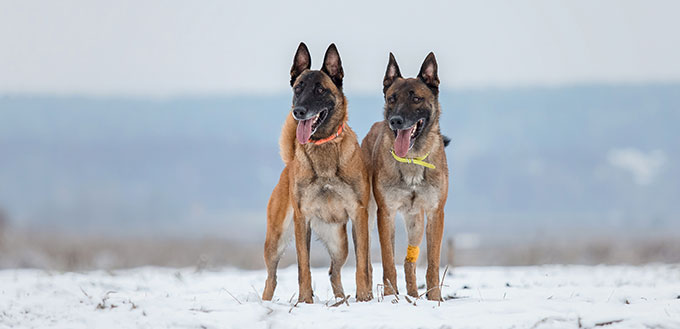
Breed Appearance
Belgian Malinois are often mistaken for German Shepherds owing to their dark faces, fawn bodies, and general shape, however, that is where the similarities end. And if you were to look at a Malinois properly, you would notice that they are actually quite unique, especially in the face.
Size
The Belgian Malinois is a large breed that can grow to be anywhere between 22 – 26 inches depending on their gender, and thanks to their extremely muscular bodies, they are deceptively heavy, with males weighing up to 75 pounds!
| Measurement | Male | Female |
|---|---|---|
| Height (to top of head) | 30-33 inches | 28-30 inches |
| Withers Height | 24 - 26 inches | 22 - 24 inches |
| Length | 37 - 40 inches | 34-37 inches |
| Weight | 55 - 70 pounds | 40 - 60 pounds |
Coat
Belgian Malinois don’t typically have a huge variation when it comes to their coat, but there are some key features that are worth knowing.
| Feature | Description |
|---|---|
| Color | They usually sit between fawn and mahogany as their overall color. However, it is possible for them to be black, cream and blue in rare cases. |
| Length | A short-haired breed, with slightly longer fur around the neck and tail. |
| Texture | Their coats are coarse in most areas, but softer around the neck and tail where the fur is longer. |
| Pattern | The most notable pattern to the Malinois coat is that they will always have a dark mask, which is generally black. |
| Resistance | Their coarse coat is water-resistant, giving them a weatherproof edge for outdoor work. |
| Thickness | Their coats are thick, with an underlayer protected by a water-resistant outer layer. |
| Additional Features | The longer fur around their neck can give them a mane-like look, whilst their tails, where the fur is longest, can be quite fluffy. |
Face
Though the Belgian Malinois is known for being tough, determined, and fiery, they actually have quite sweet and friendly faces. Malinois have long streamlined muzzles, with a rounded head and small, round, kind dark brown eyes, which give them quite a soulful look. The “clean-cut” look of their face and head, along with their large, erect pointed ears, give them an alert expression that very well suits a working lifestyle.
Build
Malinois are built for efficiency, meaning their bodies are a perfect balance of muscle and size. They carry themselves in a very proud and confident manner, showing off their broad powerful shoulders. They have been bred to herd, and so their body shape is streamlined, with a curved head and broad rounded shoulders, they become slightly narrower towards the back end.
Belgian Malinois also have large paws to cover more surface area and allow them to run further and faster with better footing. A Malinois should never be skinny and leggy, nor should they be too bulky or cumbersome.
Fun Facts
- Often misidentified as German Shepherds but have no genealogical connection.
- Eva Mendes Has a Malinois and has been using it as a bodyguard to keep her safe from stalkers.
- The Belgian Malinois is well known for being able to detect accelerants, explosives, and narcotics.
- They can keep their puppy-like energy until they are at least 4 years old, if not older!
- The Belgian Malinois is known to guard the grounds of the White House.
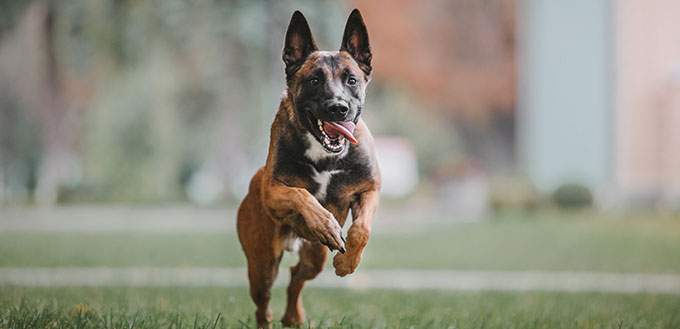
Belgian Malinois Personality
Temperament
Belgian Malinois are a very energetic breed, however, they can also be quite aloof and not the most sociable. Though they are quite often used for hunting and aggressive jobs they are not aggressive in temperament only when working. Because of their patient and hard-working nature, they are often used as guard dogs, and would not be recommended for somebody who wants a soft and cuddly pet.
Because of their high-energy temperament and extremely high IQs they can demand a lot of attention and often want to play and train for large portions of the day, and though Mals do may enjoy this form of social interaction, it can be easy to expect that they may want a fuss and cuddle afterward. However, their aloof tendencies will likely result in them wanting to go and lie down away from everyone else once they have run themselves ragged, so it is best to provide them with a space that they can call their own.
With Children
Belgian Malinois are not recommended for families with young children as they are a working dog, and whilst some working dogs may be perfectly well suited for family life the Belgian Malinois is predominantly meant to be used in demanding, and strict job roles Which make use of their boundless energy, eagerness to please and determination. Young children can often make the mistake of mishandling dogs, and though some domestic breeds are better suited for dealing with the stress of a child, the Malinois may lash out if mistreated, however unintentionally. This is not to say that the Malinois would attack your child, so much as nipping them by way of warning the child to back off.
If you do choose to have a Belgian Malinois in your home with young children you need to make sure that you socialize your dog as early as possible, with as many people as possible,, to help their confidence. You must also be absolutely sure that your child knows how to handle a dog and that they are not heavy-handed and harsh as some children can be.
With Other Animals
Belgian Malinois are a protective breed and can be very suspicious of others, so it is not ideal to get a Belgian Malinois brought into a home with another pet. They can also have a tendency to chase smaller animals such as cats, due to their high prey-drive and shepherding instincts. If a Belgian Malinois is put into a home with another animal from puppydom they can be trained to get along with other animals much easier; this is also reliant on them being socialized correctly at a young age
Temperament of Retirees or Rescues
A Belgian Malinois should never be shy, frightened, or aggressive; If you find this is the case you may want to look into what might be causing their distress. Many Belgian Malinois available are rescues, or even retired army dogs and so if you choose to adopt one of these, a shy, frightened, or aggressive demeanor could be the result of a highly stressful upbringing and a potential sign of PTSD.
If you have an ex-military dog suffering from PTSD you must be sure to address it with patience and care. Your veterinarian should be able to help you in terms of finding the right psychological help for your dog as well as perhaps providing anti-anxiety medications, and exploring alternative treatments.
Quick Personality Facts
- Belgian Malinois actually love water and are often used in doctor diving events. They have a high degree of natural ability when it comes to swimming, but can always be trained to swim better. Their reliability when it comes to training means that you can be sure they would swim stronger than most, should you choose to pursue swimming competitions with a Mal.
- Mals also love to play fetch! In fact, they are amongst some of the top breeds to enjoy a good game of fetch as this is often a very popular game with shepherding breeds. Shepherd dogs as well as other working dogs have it built into them to go and fetch something and bring it back. This is usually due to them wanting to please their owner by following an instruction well. The Belgian shepherd dog breed is known to have a strong desire to prove itself to its owners, which translates over to playtime as well.
- Malinois can be argumentative: Believe it or not, though they are working dogs and can follow instructions very well, you can expect that when they are young and still learning they will likely fight back against instruction when they are not in the mood, much like human adolescents.
- Malinois can be destructive: Possibly the worst of the Malinois’ boredom vices, is their tendency to become destructive if they haven’t had enough stimulation, so be sure to keep plenty of puzzle toys handy!
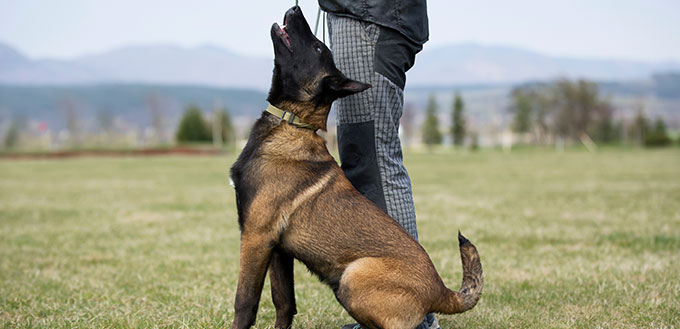
Belgian Shepherd Care
Owning and raising a Belgian Malinois can be very difficult and demanding, and is not recommended for inexperienced owners. They are naturally rough around the edges but respond well to refinement in the form of training. Though they are sweet, friendly, and devoted to their owners, they also require guidance and socializing to make both theirs and their owner’s lives easier.
Training
Belgian Malinois are made for training. They have been known to skydive, sniff out bombs, detect drugs and do all manners of difficult jobs due to effective training by their owner or handler. The key to training a Malinois is knowing the best approach, each dog can be different and you may find that one dog responds slightly better to clicker training perhaps than a whistle. You can use various methods to train your Malinois, but you must always ensure that you use a firm hand, that you are rigorous, and that you are consistent.
Obedience Training
Obedience training is extremely important early in their development, without it you may well find a Mal quite difficult to live with. If you were to train your dog in nothing else the main form of training you will need to do is obedience training. Belgian Malinois respond very well to training in general but like any dog basic obedience training is essential. It is particularly important to teach your Malinois to leave objects when you tell them to as they have a strong prey drive and this can cause complications when trying to take items away from them. Not wanting to surrender items is quite common in many breeds that have a strong predatory instinct. You may also want to teach them some of the classics such as sit, heel, lie down, and come, for day-to-day use.
Agility Training
If you were to choose to own a Belgian Malinois one form of training you may wish to consider is agility training. Agility training would exercise both their boundless energy and their minds, as they are extremely intelligent and require plenty of mental stimulation. Successful agility training relies on rapid response and fast thinking on the dog’s part, perfect for a high-energy, sharp-minded breed such as a Malinois. You must keep in mind that agility training requires plenty of repetition and consistency; It is something you would want to do at least once a week and try and practice at home where possible. Agility training also tests the connection between owner/handler and dog as there is a lot of trust required on both sides, so if you were to pursue agility training you would find that it would likely strengthen the bond between yourself and your dog.
Work
Obedience with agility training is all well and good but at the end of the day Malinois are working dogs and so the best thing you could do would be to give them a job. By giving your Belgian sheepdog a job it will keep them active and stimulated throughout the day and save you the trouble of needing to do too much training outside those hours. In fact, you will likely find that working will wear them out, and they would be much calmer at the end of the day.
Feeding
Malinois are a lean and muscular breed meaning their diet needs to be rich in protein to provide them with plenty of restorative energy to help their muscles to recover at the end of a long working day. Large breed dogs typically have a slower metabolism, so you want to be looking for food with a lower caloric density per pound, this way they will be able to eat plenty of food to fill their stomachs without eating too many calories and gaining weight.
Excessive weight gain is very risky with large breed dogs who are often predisposed to joint problems, which can be exacerbated if they are forced to carry around more weight than they need to. Overweight dogs are also less able to exercise, meaning they will experience difficulty shedding the weight they have gained.
Take a look at our guides on the Best Dog Food for German Shepherds and Best Large Breed Dog Foods.
Grooming
Belgian Malinois only have a short coat which is thicker around the neck and tail, so they don’t require a lot of grooming, with only needing brushing perhaps once a week. Though it is worth noting that they do also drop their coats twice a year, and when this happens their fur will be absolutely everywhere and will require brushing several times a week until the shedding period is over. The time in which they drop their coats tends to settle around spring and autumn with the major changes of the season.
Thanks to their short coats they don’t often require bathing unless they have got something on their fur which can only be removed with a bath. Their coat is naturally very sleek, and so will not withhold day-to-day grime, which means that so long as you keep on top of brushing them, general dirt will be removed with ease if it does not fall away on its own. They are generally considered a low-maintenance breed when it comes to grooming for exactly this reason, though that opinion can change during the shedding season.
Health
Generally speaking, Belgian Malinois dogs are a strong and healthy breed, just another thing that makes them such a popular working dog. But like any dog, they have predispositions to several health problems that they may develop as they get older particularly as large breed dog’s bones can be quite troublesome in old age. You may well find that you have a perfectly healthy Belgian Malinois that never experiences any health problems, but it is important to be clear on the possibilities and how to recognize when there may be a problem arising:
Epilepsy: Sadly Belgian Malinois, much like the Dutch Shepherd, can be known to suffer from epilepsy. Epilepsy includes seizures, fits, reactive seizures, and convulsions. It is unfortunately unknown where epilepsy stems from in the Malinois DNA, but it is believed at this time to be an inherited disease. If your pet’s breed is known for being high risk with Epilepsy, it is best to watch them carefully for any signs of a fit, and speak with your veterinarian about how best to deal with a seizure, should one happen. But most importantly in that instance, stay calm.
Hip Dysplasia: Hip dysplasia is a hereditary condition that affects the thigh bone in the way it fits into the hip joint. Pets are most commonly affected by this as they get older and it can result in discomfort, pain, lameness, and in more severe cases, an inability to walk altogether. Whilst hip dysplasia may not always be obvious with some puppies not exhibiting any signs of possibly developing this problem, it can be triggered by environmental factors such as an impact injury or even rapid growth which can be the result of a high-calorie diet. There are surgeries that can be performed in more severe cases to help with this condition, or in less severe cases there are treatments and medications available that may help your dog to navigate day-to-day life more easily.
Elbow Joint Dysplasia: Malinois’ elbows are also prone to a type of dysplasia that affects the elbow joint, this can cause painful lameness as well as joint laxity. Though there is no cure, preventive medication, or easy fix for this, there are treatments and medications available that may help your dog to deal with the pain and make them more comfortable. Older Malinois, in particular, tend to experience dysplasia problems.
Progessive Retinal Atrophy (PRA): Progressive Retinal Atrophy is a degenerative condition that results in a loss of sight, caused by a loss of photoreceptors at the back of the eye. This condition is detectable several years prior to your dog revealing any sign that they may be losing their sight, however, there is, unfortunately, no cure. Fortunately, pets such as dogs and cats are able to adapt much more easily to losing their sight than humans, as they are extremely attuned to their environment, and are able to use their ultra-powered senses to adjust.
Anesthetic Sensitivity: This is not so much a condition as it is a warning, Belgian Malinois sensitivity when it comes to anesthetic, and sp anytime a Malinois is being prepared for surgery the veterinarian should be made aware of this sensitivity.
Dental Disease: No more so than any other dog, but absolutely worth noting, is dental disease. To avoid gum disease, tooth loss, and severe pain you must be sure to keep your Malinois mouth as clean as possible. Dental disease can cause severe complications if a problem is left to become infected and so it is best to take good care of your dog’s teeth early on and continue to look after them throughout their life to avoid these complications in the future.
General Allergies: Allergies are commonplace with dogs, most common of all being wheat, dairy, pollen, soy and gluten. These allergies often cause skin irritation, itching and if left for long enough, hair loss. Fortunately, they can often be solved with the use of an antihistamine or a change of diet, but if an allergy seems particularly persistent or severe, don’t hesitate to ask your vet for advice.
Health problems to any degree are inevitable throughout your pet’s lifetime, and so it is imperative that you make sure to get pet health insurance from the moment you bring them home. Not only will this ensure your pet gets the care they need, but you will be covering your own back in the process.
Exercising
Malinois seemingly have an endless source of energy, and so when it comes to exercising them you need to be sure that you are taking them out for long walks preferably doing tasks such as hiking, which can give them the mental stimulation of finding a path through difficult terrain, as well as the physical stimulation of climbing. Alternatively, if you’re unable to do something like hiking you can pursue agility training, another rich source of exercise which you can provide them with the mental stimulation that they require. These types of high-energy, trust-reliant activities can also be beneficial in strengthening the bond between you and your dog.
Fortunately, the Belgian Malinois breed is highly adept at a wide range of activities, hence their eclectic working background, and so if you were to have another activity in mind which you may consider to be too difficult for a dog you will likely find that your Malinois will take to it well.
Adopt Don’t Shop
Belgian Malinois are far too often bought by owners that are not prepared to put in the work that it takes to raise them right, and so more and more of them are finding themselves in shelters and rescues. By buying a dog you’re only encouraging more breeders to continue to develop that breed, But when that breed is proving to be problematic in domestic environments (with unprepared or inexperienced owners) and is therefore constantly being given up to shelters, we should be focused on adopting those that have lost their homes due to irresponsible ownership.
Adopting an Ex-Service Dog
If you have the time and the patience and are willing to put in the dedication that is needed, you may want to consider rescuing an ex-military dog. K9 units and ex-military dogs tend to suffer from mental health problems such as PTSD and other anxiety disorders as a result of their time serving, and so they require a little bit of extra TLC to help them to adapt to life outside of that service. To adopt an ex-service dog you need to be prepared to learn the commands and training that they have grown up with and be able to continue using and adapting these commands for the remainder of their life.
Rescues
There are several non-profit organizations dedicated to the rehabilitation and rehoming Belgian Malinois throughout the United States and Canada:
Please, try to adopt wherever possible, these dogs didn’t have a choice in becoming homeless, but you have a choice in changing that, and giving them a loving new home.
Price
The price of a Belgian Malinois depends on whether you decide to go with an untrained puppy or a fully trained protection dog.
Untrained Belgian Malinois puppies from a reputable breeder can cost anywhere between $1,000 and $2,500 depending on the parentage. If your Belgian Malinois puppy comes from a champion bloodline or is purebred with proof from breeders, then the cost of the puppy can double.
Fully trained Belgian Malinois dogs used for protection can be anywhere up to $20,000. This is owing to the fact that it can take several years to train a puppy to be a high-standard protection dog, and you are paying for the convenience of not having to train the puppy yourself and being sure that the training has been done to a proper and high standard.
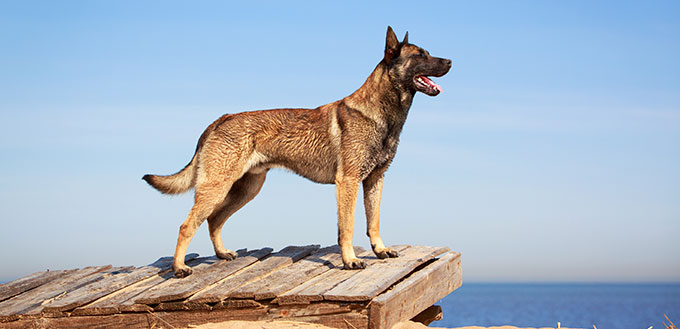
FAQ’s:
Q: Are Belgian Malinois good family pets?
A: The Belgian Malinois is a very boisterous breed, which if not trained correctly can prove to be quite troublesome, therefore they are not really a breed that would be recommended as a family pet. Though Malinois do form strong bonds with their families and are loyal to a fault, if they are not socialized correctly they can become stressed and irritable with young children. Particularly for first-time owners, Mals are a breed that should be avoided, as there are many other much easier breeds to bring into a family home.
Q: Why are Belgian Malinois called Maligators?
A: The nickname “Maligator” has stemmed from their fierce reputation in the K9 world. Malinois have been utilized in various military, police, and special force operations going all the way back to WW1 and so it is to be expected that they gained a reputation for being fearful, aggressive, unstoppable machines. This particular nickname has resurfaced following a recent anti-terrorist raid in which a Belgian Malinois by the name of Conan saved the day!
Q: Do Belgian Malinois like to cuddle?
A: Whilst a Belgian Malinois can be friendly, playful, funny, mischievous, loyal, and loving, they are not big cuddlers. Though of course, every dog has its own personality and it’s guaranteed there are some out there that love a good snuggle, on average a Malinois will demand your attention for playtime, and then be quite happy to sit back and relax in their own little space afterward.
Q: Is there any difference between German Shepherd and Belgian Shepherd?
A: Short answer, yes. German Shepherd and Belgian Shepherds may look alike, though contrary to what you may believe they do not actually share any genealogical traits and come from completely separate backgrounds. So whilst people may think that the German Shepherd must be related to the Belgian Shepherd based on looks alone, they are in fact completely wrong.
Q: Why are Belgian Malinois Used as Police Dogs?
A: It all comes down to the way they were bred. Belgian Malinois was bred to be the best working dog they could be; so they are strong, determined, brave, eager to please, streamlined, efficient, and incredibly intelligent. Their bravery, intelligence, and determination have served to show that they are capable of working very demanding jobs and following instructions to the letter, making them a trustworthy and reliable K9 to work with.
Q: Are Belgian Malinois high maintenance?
A: In terms of grooming, no not particularly, but in terms of raising them, yes absolutely. Grooming a Malinois is a simple case of brushing them once every few weeks (except when they’re blowing their coat). But raising a Malinois is an entirely different ball game and the reason why we don’t recommend them for homes with children. Belgian Malinois are highly active, demanding, extremely intelligent, and occasionally temperamental, so you need to know how to handle one before committing to raising one.
Q: Should I Spay or Neuter my Belgian Shepherd?
A: Absolutely. Unless you specifically intend to breed your dog, you should always have them neutered or spayed. Unspayed and unneutered pets can have a tendency to become unpredictable and potentially aggressive during their mating seasons, which puts you or your family at risk. You should also always look to avoid unwanted pregnancies wherever possible, as there are already too many dogs in shelters due to reckless ownership.
Source:
- Belgian Malinois, PetMD







